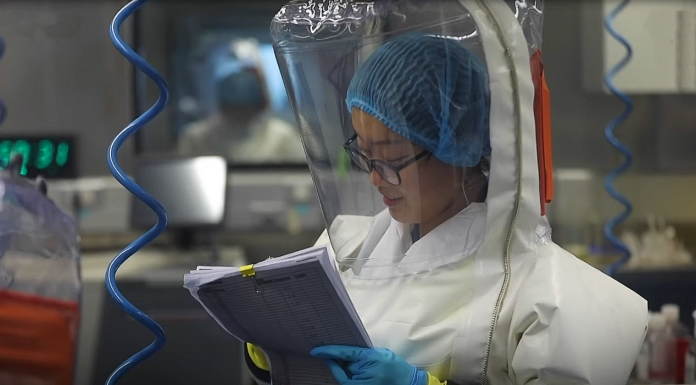In 2013, Chinese virology researchers isolated a SARS-like coronavirus that is now the closest relative to the COVID-19 virus that is known.
Since then, Chinese scientists, with help from the government, have made it difficult for researchers to discover anything about the virus sample and the origins of COVID-19.
Taking samples from a remote mine where six workers had previously become ill with a SARS-type disease that bore many of the same markings as COVID-19, virologists found a “needle in a haystack,” in 2013, says the Epoch Times.
“It was just one of the 16,000 bats we sampled. It was a faecal sample, we put it in a tube, put it in liquid nitrogen, took it back to the lab. We sequenced a short fragment,” Peter Daszak, the president of EcoHealth Alliance told the Sunday Times last year.
Daszak is better known as the scientist who facilitated the U.S. government grant to fund the bat research at the Wuhan lab, which is a suspected site where COVID-19 originated.
Since the discovery in 2013, Chinese researchers have “obfuscated” the virus by changing its name from RaBtCoV/4991 to RaTG13 just as the virus began to emerge worldwide in February of 2020.
The revelation comes on the discovery that a U.S. government database previously deleted genetic sequencing information about the COVID-19 virus at the request of Chinese researchers in May of last year.
The Wall Street Journal and other publications have attempted to send reporters to the location of the mine where the original sample was collected, but the area has been sealed off by the government.
“A Journal reporter reached the mine by mountain bike but was later detained and questioned for about five hours by police,” says Journal, “who deleted a cellphone photograph of the mine. Villagers told the reporter that local officials had warned them not to discuss the mine with outsiders.”
The central figure in the drama is Shi Zheng-li, the director of the Wuhan Institute of Virology, who, in 2007 “showed how viruses could be manipulated to infect and attack human cells using an HIV-based pseudovirus. This experiment, funded by the Chinese Academy of Sciences, was the first indication that Shi’s Wuhan laboratory was acquiring the technologies and skills required to manipulate viruses collected in the wild,” according to the Epoch Times.
More evidence that RaTG13 is a fake sequence.
“The earliest SARS CoV-2 sequences were collected in Wuhan in December but these sequences are more distant from RaTG13 than sequences collected in January from other locations in China or even other
countries”https://t.co/e1vsDtADUG— Dr. Lawrence Sellin (@LawrenceSellin) June 27, 2021
She was also present at the mine location when the close relative to the COVID-19 virus was collected in 2013.
Shi dismisses the discrepancies.
“This is no longer a question of science,” she said on the phone to the New York Times. “It is speculation rooted in utter distrust.”
The information is adding to pressures for governments around the world to begin a serious investigation into the origins of COVID-19 and adding to the criticism from those who wonder why it’s taken so long to begin in earnest.
A World Health Organization team investigated the Wuhan lab informally earlier this year, but it was an investigation that lacked depth.
“The team, which spent three hours at the institute,” says the Wall Street Journal, “had little to go on beyond assurances from the institute’s own staff, team members say. On the same day the report was released, Dr. Tedros said the team hadn’t adequately explored a potential lab origin.”

